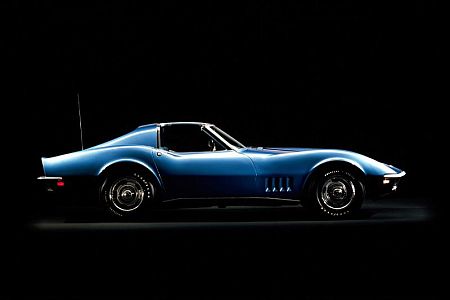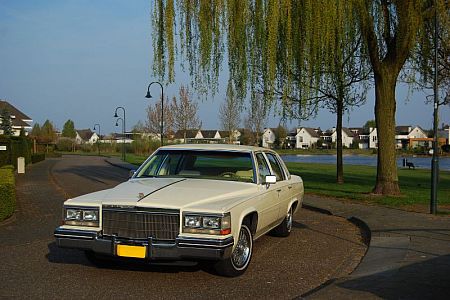Lotus Eclat & Elite
With Lotus, the brand of unadulterated driver's cars, you wouldn't expect something like a Gran Turismo. Yet the Locus Eclat and Locus Elite do belong to that category.
Astonishingly clever how such a small manufacturer managed to make such delectable compromises and, at the same time, a pity that these sports cars are still not on the minds of many car enthusiasts.
Refined GTs
Lotus is a symbol of uncompromising, unfiltered sports cars and has been for more than half a century. In that light, it is safe to say that with the Eclat and Elite, they took a completely different path, that of refined GTs with a certain versatility.

Did the average citizen suddenly get the upper hand? Well, not quite. They wanted to play a significant role in the American market and in Europe, too, there was an appetite for a formidable sports car with a wide range of uses.
At Hethel, they united those attributes in inimitable fashion, and apart from the exorbitantly high list prices, the Eclat and Elite were showered with positive reviews. Their many strong features still stand the test of time, while the stage of inaccessibility is decades behind them. With some caveats, fans of such a perfect blend should strike out by now.
Lotus Elan +2
The first step towards a more or less family-friendly Lotus was the Elan +2, a stretched version of the much-loved and almost iconic sports car from the 1960s. With the follow-up, they wanted to be more attentive and put forward a more mature concept, so the designers started with a blank sheet of paper.
Launch of the Lotus Elite
In 1974, Lotus unveiled the Lotus Elite, also marked with the suffix M50, to avoid confusion with the little racing car of the same name from earlier days. Internally, the code T76 circulated, inadvertently the same as that of a Formula 1 car from its own stable.

Rumour had it that the design of the combi-like coupé came from the Italian studio of Giugiaro, but the latter was only responsible for the interior: Lotus took care of the exterior.
Frame construction and luggage space
The Elite possessed a kind of polyester backbone construction with steel subframes, from which it derived low weight and at the same time convincing rigidity. With, among other things, special shock-absorbing bumpers, the British met American safety requirements.
The luggage compartment, accessible via an opening rear window, was separated from the passenger compartment by a glass partition to keep draughts and noise out of the cabin during loading and unloading.

Lotus created four more or less fully-fledged seats under the ultra-low roofline and applied a nice trick to do so: passengers on the rear seats fell into a kind of pit, with a steep slope to support their upper legs.
Lotus Elite price
Luxurious materials gave class to the whole thing, and it needed it, because the Lotus fell in the price segment of much more heavily motorised sports cars, against which it had to compete with a two-litre sixteen-valve.
Sure, it was a fine piece of engineering and there was no shortage of horsepower, but at the drinks table it still raised eyebrows.
The press may have applauded the Lotus Elite, but the high purchase cost was a stumbling block for many and the long, abruptly truncated roofline did not please everyone.
Introduction Locus Eclat
An answer followed in 1975, in the form of the simpler Eclat, effectively a true coupé based on the Elite. Lotus skimped slightly on the finish and swapped the five-speed gearbox for a four-speed type, thus managing to keep the price down.

With the Eclat, customers sacrificed headroom for rear passengers, but in return the car offered a more generous boot than the Elite. The development of both cars ran in parallel from then on. Different equipment levels were possible, indicated by numbers, while types with an automatic transmission also appeared.
S2 models
For model year 1980, both cars were revised externally and internally. The S2 could fall back on a somewhat smoother 2.2-litre engine and looked more up-to-date, with a front spoiler and different rear light units, from the Rover SD1. The previously corrosion-prone chassis section was now galvanised. Lotus kept production going until 1982; then the Excel offloaded both the Eclat and Elite.
Maintenance and tips
In terms of quality and durability, we should approach a Lotus differently from a mass manufacturer's product. Its character is all about performance, with an urgent request to owners to treat their Eclat or Elite with care and awareness. That means not only driving the thing nice and warm and taking speed bumps with care, but also keeping it running frequently, i.e. not storing the car unused for months on end. After all, that can result in complaints and breakdowns.
Also, do not expect the materials to last until the end of time. Furthermore, specialists strongly advise not to take home a refurbisher, because the availability of parts is at its saddest and having the engine reconditioned for competition use is a pain in the ass. Anyway, maintenance requires a deeper investment than some competitors.
Availability Lotus Eclat & Elite
You will see an Eclat or Elite for sale only sporadically and much less often in pristine condition, so be patient. The upgraded S2 clearly costs the most, especially if it's an Eclat Riviera with removable roof panel. With a Lotus like these two, you treat yourself to a practical semi-race car, with phenomenal handling and the purest driving experience you could wish for. Besides, you'll be gripped time and again by that fantastic feeling of owning something very special, built with passion.




